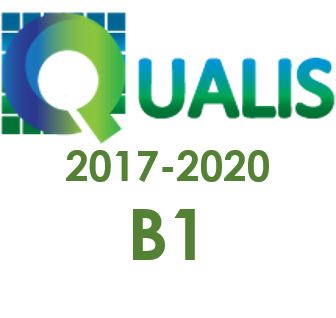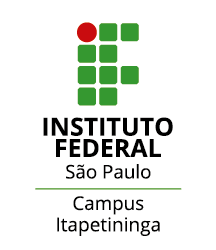A Imprensa digital como recurso para refletir e aprender sobre diversidade metodológica na prática científica
Palavras-chave:
Educação Científica. Natureza da ciência. Notícias da ciência. Prática científica. Mídia digital.Resumo
Uma das características mais importantes da prática científica é a variedade de métodos que os cientistas usam em suas pesquisas. Mas, a noção distorcida de que existe um método científico padrão, que todos os cientistas aplicam em suas pesquisas, permanece profundamente enraizada na sociedade. Isso pode ser comprovado não apenas em livros didáticos e planos curriculares da educação escolar, mas também nos meios de comunicação. Portanto, este trabalho propõe a leitura crítica e reflexiva de certas notícias da imprensa digital como um recurso para aprender sobre a diversidade metodológica na prática científica.
Downloads
Referências
ACEVEDO-DÍAZ, J. A.; GARCÍA-CARMONA, A. «Algo antiguo, algo nuevo, algo prestado». Tendencias sobre la naturaleza de la ciencia en la educación científica. Revista Eureka sobre Enseñanza y Divulgación de las Ciencias, Cádiz, v. 13, n. 1, p. 3-19, 2016.
ACEVEDO-DÍAZ, J. A.; GARCÍA-CARMONA, A. Controversias en la historia de la ciencia y cultura científica. Madrid: Los Libros de la Catarata, 2017.
BELL, R. Teaching the nature of science: Three critical questions. In Best Practices in Science Education. Carmel, CA: National Geographic School Publishing, 2009.
FLORES, J.; CABALLERO, M. C.; MOREIRA, M. A. El laboratorio en la enseñanza de las ciencias: Una visión integral en este complejo ambiente de aprendizaje. Revista de Investigación, Caracas, v. 33, n. 68, p. 75-111, 2009.
GARCÍA-CARMONA, A. Ciencia y pensamiento ilustrado. Red Científica: Ciencia, Tecnología y Pensamiento, Madrid, 2002. Recuperado de: https://www.researchgate.net/publication/260185138_Ciencia_y_pensamiento_ilustrado (última consulta: 4 de julio de 2020)
GARCÍA-CARMONA, A. Naturaleza de la ciencia en noticias científicas de la prensa: análisis del contenido y potencialidades didácticas. Enseñanza de las Ciencias, Barcelona, v. 32, n. 3, p. 493-509, 2014.
GARCÍA-CARMONA, A.; ACEVEDO-DÍAZ, J. A. The nature of scientific practice and science education. Science & Education, Dordrecht, v. 27, n. 5-6, p. 435-455, 2018.
HODSON, D. Laboratory work as scientific method: Three decades of confusion and distortion. Journal of Curriculum Studies, Oxford, v. 28, n. 2, p. 115-135, 1996.
HODSON, D. Towards scientific literacy: A teachers’ guide to the history, philosophy and sociology of science. Rotterdam: Sense Publishers, 2008.
HULL, L. W. H. History and philosophy of science. New York: Longmans, Green, 1959.
IBÁÑEZ, M.; ROMERO, M. D. C.; JIMÉNEZ, M. P. ¿ Qué ciencia se presenta en los libros de texto de Educación Secundaria? Enseñanza de las Ciencias, Barcelona, v. 37, n. 3, p. 49-71, 2019.
IRZIK, G.; NOLA, R. A family resemblance approach to the nature of science. Science & Education, Dordrecht,v. 20, n. 7-8, p. 591–607, 2011.
JARMAN, R.; MCCLUNE, B. Developing scientific literacy. Using the news media in the classroom. New York, NY: Open University Press, 2007.
LÓPEZ, M.; LUQUE, N.; MARTÍN, A. Medios de comunicación y COVID-19: Pautas para una información responsable. Escuela Andaluza de Salud Pública, Granada, España, 2020. Disponible en https://www.easp.es/web/coronavirusysaludpublica/medios-de-comunicacion-y-covid-19-pautas-para-una-informacion-responsable/ (última consulta: 25/06/2020)
MILLER, J. D. Public understanding of, and attitudes toward, scientific research: What we know and what we need to know. Public Understanding of Science, London, v. 13, n. 3, p. 273-294, 2004.
MINISTERIO DE EDUCACIÓN. Real Decreto 1105/2014, de 26 de diciembre, por el que se establece el currículo básico de la Educación Secundaria Obligatoria y del Bachillerato. Madrid: Boletín Oficial del Estado, 2015.
NATIONAL RESEARCH COUNCIL. A framework for K-12 science education: Practices, crosscutting concepts, and core ideas. Washington, DC: The National Academies Press, 2012.
OLIVERAS, B.; MÁRQUEZ, C.; SANMARTÍ, N. The use of newspaper articles as a tool to develop critical thinking in science classes. International Journal of Science Education, Oxford,v. 35,n. 6, p. 885-905, 2013.
ORGANIZATION FOR ECONOMIC CO-OPERATION AND DEVELOPMENT. PISA 2018 assessment and analytical framework. Paris: OECD Publishing, 2019.
PÍÑAR, I. Física y Química. 3º de Secundaria. Madrid: Oxford, 1998.
PUENTE, J.; VIGUERA, J. A.; GONZALO, P. Física y Química. Newton. 3º de Secundaria. Madrid: SM, 2002.
SHAMOS, M. H. The myth of scientific literacy. New Brunswick, NJ: Rutgers University Press, 1995.
SOBER, E. Is the scientific method a myth? Perspectives from the history and philosophy of science. METODE Science Studies Journal, Valencia, n. 5, p. 195-199, 2014.
WEINBERG, S. To explain the world: The discovery of modern science. London: Penguin, 2015.
WOODCOCK, B. A. “The scientific method” as myth and ideal. Science & Education, Dordrecht, v. 23, n. 10, p. 2069-2093, 2014.
Downloads
Publicado
Versões
- 2020-07-09 (2)
- 2020-07-06 (1)
Como Citar
Edição
Seção
Licença
Copyright (c) 2020 Revista Internacional de Pesquisa em Didática das Ciências e Matemática

Este trabalho está licenciado sob uma licença Creative Commons Attribution-NonCommercial-NoDerivatives 4.0 International License.




